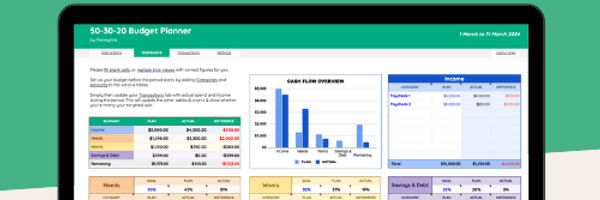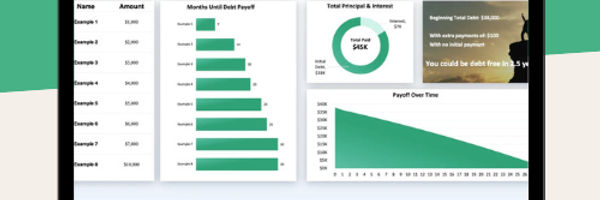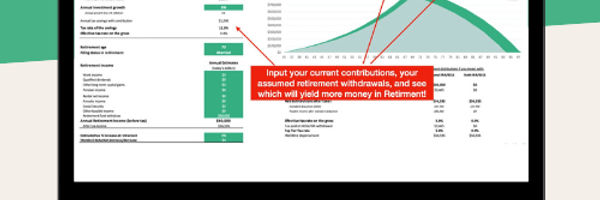To say the economy right now is weird would be an understatement. The stubborn inflation is finally dropping down, but the Fed still plans to increase the interest rate to achieve its 2% target. Major tech companies are announcing layoffs every day, but unemployment claims are at a record low of 3.5%.
In the midst of these mixed signals, experts are certain we’ll see a recession in 2023.
This prediction may get you to question a ton of things, including what a recession really is, what it looks like, is a recession coming, and how to sort your finances beforehand.
We’ll take you through all that and much more—
What is an Economic Recession?
The general definition of a recession says it’s an economic downturn that’s marked by two consecutive quarters of negative gross domestic product (GDP).
The National Bureau of Economic Research (NBER), the organization that defines US business cycles, takes a different approach. It says the recession is a significant decline in economic activity that’s spread across the economy and lasts more than a few months.
So, is America in a recession? Among other things, factors like the strong labor market and corporate earnings growth have convinced experts we aren’t in a recession yet. But the risk of one is undoubtedly looming over our heads.
US Recession: America’s Key Market and Economic Data Indicators
Is a recession coming? This detailed breakdown of America’s key economic and market indicators should help you see the bigger picture:
ECONOMIC INDICATORS | RECENT REPORT | ANALYSIS |
Gross Domestic Product (GDP) | +2.9% (December 2022) | Good: +2.1% overall growth in 2022 |
Consumer Price Index (CPI) | 6.5% (December 2022) | Bad: inflation is above the Fed’s 2% to 3% annual target rate |
ISM Manufacturing Index | 46.30 (March 2023) | Bad: decline of 18.91% from 2022 |
Industrial Production | +1.6% (March 2023) | Neutral: decline of 0.7% from February 2023 |
Retail Sales | +5.4% (January to March 2023) | Neutral: consumer spending trajectory remains weak |
Conference Board Leading Indicators | - 0.3% (February 2023) | Bad: LEI is a reliable indicator of recessions |
MARKET DATA INDICATORS | RECENT REPORT | ANALYSIS |
The stock market | +7.5% (mid-April 2023) | Neutral: market remains volatile in 2023 |
Treasury yield curve | -0.59% (April 2023) | Neutral: inverted yield curve is creeping back into positive territory |
Unemployment rate | 3.6% (February 2023) | Good: significantly less than the 15% in April 2020 |
Initial jobless claims | 228,000 (April 2023) | Bad: more people are losing jobs and claiming unemployment checks |
Job openings | 11 million (December 2022) | Good: significantly more than the seven million in January 2020 |
Real estate market forecast | +9.8% new projects (February 2023) | Bad: overall rate is 18% smaller than the number of housing projects seen in 2022 |
Here’s a quick round-up:
Good: 3
Bad: 5
Neutral: 4
As time passes, it appears that more of our data points are drifting into the neutral zone rather than remaining positive. This could mean that the US is on the verge of a recession.
However, not every data point listed here would have an equal influence on whether the economy will go into recession. If the GDP continues to grow (which seems unlikely) and the inflation moderates, we may escape a recession and have what the Fed describes as a “soft landing.”
But given the recent stress on the banking sector and how that affects the Fed's rate hikes, the economy will probably continue declining. The US is not in a recession just yet, but things aren't looking too good.
Recession 2023: The Shocking Collapse of Silicon Valley Bank
Apart from key economic indicators, a recent event that has added to the fear is the collapse of the Silicon Valley Bank. We’re talking about a lender to some of the biggest names in the American tech space.
So, what triggered the largest bank failure since the 2008 financial crisis? And will this lead to a recession? Let’s find out—
What triggered the Silicon Valley Bank collapse?
The Silicon Valley Bank was flush with cash from high-flying tech start-ups for decades. It kept a small chunk of its deposits in cash and used the rest to buy long-term debt (like Treasury bonds).
These investments promised steady returns when interest rates were low. But the whole strategy was shortsighted—and the bank soon faced the heat when the Fed started raising interest rates to combat rapid inflation.
The bank further contributed to its own demise by concentrating its business on the tech industry. So when funding began to dwindle, tech start-ups and their executives began to tap their accounts more.
The Silicon Valley Bank had to then sell its investments at steep discounts to fulfill these requests, leading to a complete free fall.
What’s happening now?
The Federal Deposit Insurance Corporation (FDIC) took over the 40-year-old bank. This move has put about $175 billion in customer deposits under its control.
Could this trigger a recession?
While this event alone can’t trigger a recession, economists warn that there are several other banks going under. These banks can be sitting on unrealized losses on their bond portfolio. And if they had to sell those bonds at market value, they could go bankrupt—just like the Silicon Valley Bank.
Are We Going into a Recession? Our Recession Predictions
Are we headed for a recession? Based on all the factors we’ve addressed so far, the US can experience two recession-related outcomes. Here’s a breakdown of both scenarios—
1. Soft landing or a mild recession
A soft landing is a cyclical slowdown in economic growth that avoids recession. In other words, this is the outcome we’re all hoping for.
The Federal Reserve is actively seeking a soft landing by raising interest rates. The aim is to prevent the economy from experiencing excessive inflation without causing a major slump.
Here’s why a soft landing is still possible for the US:
Consumer spending, which accounts for around 70% of the US economy, remains robust.
According to the most recent jobs report, the unemployment rate is 3.4%, the lowest since May 1969.
The number of job opportunities has reached an all-time high of 11 million as of December 2022.
2. Deep recession
Inflation is currently cooling, but this doesn’t necessarily mean the Fed may slow or cease hiking interest rates. Experts believe inflation numbers don’t tell us the whole story.
For instance, inflation among services—as opposed to goods—hit its highest level since 1982 in January 2023. Past recession figures reveal that services inflation usually only comes down after the unemployment rate has picked up. Hence there’s a high chance we’ll see weak employment figures before the inflation weakens.
So, how bad will the next recession be? Experts suggest a deep recession would mean a steep fall in stock prices in 2023. The S&P 500 could even hit as low as 3,000 this year—implying a loss of 26% to 29%.
Is the Economy Going to Crash? Top Cities Prone to Recession
Not all American cities will be equally affected by the impending recession. Here are five key factors that determine how prone a city is to a severe economic downturn—
1. Cities popular with tourists
A 2023 study by North Carolina’s Kenan Institute predicts that cities that rely heavily on tourism are expected to take a beating during the next recession. That’s because customers may cut back on unnecessary spending during an economic downturn.
Tourism-intensive areas such as Orlando, Las Vegas, and Miami are expected to take a bit hit.
2. Construction-heavy cities
Kenan Institute’s study also points out that the construction sector appears in danger of experiencing heavy layoffs.
This could in turn affect cities that rely heavily on these jobs, such as Tampa and Jacksonville. Philadelphia, another construction-focused city, is also predicted to have the greatest decline in growth (-2.6%) in 2023.
3. Cities which aren’t tech hubs
A study by study Journal of Urban Economics suggests that tech resource-rich metros and knowledge hubs were the less hard-hit by the Great Recession. This means cities with large tech industries like San Francisco, Austin, Raleigh, and Denver may keep growing during the next recession.
This leaves America’s least tech-savvy cities vulnerable to the impact of a recession. This includes cities like Laredo (Texas), Punta Gorda (Florida), Huntsville (Alabama), and more.
4. Cities with high poverty levels
GOBanking Rates did a study of 89 major metropolitan areas in the US and found that regions with increasing poverty percentages were the most prone to the next recession.
Here are some American cities with the worst poverty rates:
CITY | PERCENTAGE OF PEOPLE WITH INCOME BELOW THE POVERTY LINE |
Fresno, California | 28.4% |
Toledo, Ohio | 26.5% |
Stockton, California | 22.4% |
Bakersfield, California | 19.2% |
Las Vegas | 16.2% |
5. Cities with inelastic home prices
Journal of Urban Economics’ study also suggested that metro economies that are more dependent on housing (or have “lower housing price elasticities”) are also more vulnerable to recession.
This is probably why Rustbelt metros like Detroit and sprawling Sunbelt cities like Miami, Las Vegas, Tampa, Orlando, and Jacksonville were hugely affected by the “Great Recession” in the late 2000s.
Timeline of Previous American Recessions: What History Tells Us
If we do enter a recession, when will the economy recover? While nothing is set in stone, we can make a calculated guess based on data from previous recessions.
Here’s a brief breakdown:
PAST RECESSION | TIME PERIOD | DURATION | GDP DECLINE | UNEMPLOYMENT RATE | PRIMARY TRIGGER |
Roosevelt Recession | May 1937 to June 1938 | 13 months | 10% | 20% | Contractionary fiscal policy of the Roosevelt administration |
V-Day Recession | February 1945 to October 1945 | Eight months | 10.9% | 3.8% | Government spending dried up at the end of World War 2 |
Post-War Brakes Tap Recession | November 1948 to October 1949 | 11 months | 1.7% | 7.9% | First phase of the post-war boom saw a backlog of consumer demand and a shortage of production capacity |
M*A*S*H* Recession | July 1953 to May 1954 | 10 months | 2.7% | 5.9% | Wind-down of the Korean War |
Investment Bust Recession | August 1957 to April 1958 | Eight months | 3.7% | 7.4% | Tightening of the monetary policy as the inflation rate rose from 0.4% in March 1956 to 3.7% a year later |
‘Rolling Adjustment’ Recession | April 1960 to February 1961 | 10 months | 1.6% | 6.9% | Consumers’ reduced demand for domestic autos and growing competition from inexpensive imports |
Guns and Butter Recession | December 1969 to November 1970 | 11 months | 0.6% | 5.9% | Increased military spending in the Vietnam War |
Oil Embargo Recession | November 1973 to March 1975 | 16 months | 3% | 8.6% | Start of the Arab Oil Embargo, which would quadruple crude prices |
Iran and Volcker Recession | January 1980 to July 1980 | Six months | 2.2% | 7.8% | Iranian Revolution that caused oil prices to double |
Part 2 of the Double-Dip Recession | July 1981 to November 1982 | 16 months | 2.9% | 10.8% | Inflation was up to 11.1% during this period |
Gulf War Recession | July 1990 to March 1991 | Eight months | 1.5% | 6.8% | Iraq invaded Kuwait, resulting in an oil price shock |
Dot-Bomb Recession | March 2001 to November 2001 | Eight months | 0.3% | 5.5% | Collapse of the dotcom bubble |
The Great Recession | December 2007 to June 2009 | 18 months | 4.3% | 9.5% | Downturn in US. housing prices triggered a global financial crisis |
COVID-19 Recession | February 2020 to April 2020 | Two months | 5.1% | 14.7% | COVID-19 pandemic spread |
Is the US in a Recession? Top Tips to Prepare for an Economic Downturn
Here’s a step-by-step breakdown of what we think is the best way to prepare for the upcoming recession—
1. Set up an emergency fund
A Consumer Financial Protection Bureau report from 2022 says 24% of customers have no emergency savings, while 39% have saved less than a month’s pay.
This means most Americans are living paycheck to paycheck and would be in trouble if they lost their jobs during the recession. Weekly unemployment benefits of $398.87 will barely cover an individual’s cost of living in the US.
That’s why it’s critical to have an emergency fund to survive a recession. Get your emergency fund to cover at least one year of expenses. Don’t get intimidated by that number. Start making small contributions today.
The best place to start, is to have a good monthly budget tracker. We recommend using a 50/30/20 method if you're just getting started. You can grab yourself a copy of our template below 👇

50/30/20 budget template perfect for beginners!
A few key features of this template:
Only includes the things you need – no unnecessary tabs
Included clear instructions
Pre-filled with sample data
Fully customizable to your needs

2. Zero in on debt repayment
Paying off your debts should be your first priority while planning for the next recession.
Here’s the thing: When the recession comes, you’re more likely to lose your job. This has an immediate impact on your ability to make repayments. That’s why it’s critical to be debt-free before the economic collapse.
Take stock of your financial status and prioritize repaying:
Credit card statements.
Rent versus mortgage.
Payments for a car.
Medical bills.
Loan repayments, among other things.
Not sure where to begin?
Consider using the debt snowball method. This debt-reduction technique prioritizes debt repayment from smallest to greatest. As you knock out each remaining balance, you gain momentum.

Time to get out of debt with this debt snowball worksheet! 💪
As seen on CNBC and Business Insider, this is the best debt snowball spreadsheet template for Microsoft Excel and Google Sheets that is out there!
A few key features of this template:
It will show you when you can pay off your debt
Detailed but super easy and suitable for beginners
Can handle up to 32 debts!

See how you can get out of debt fast:
3. Recession-proof your 401K
One thing is certain: When the recession hits, the value of your 401K assets will begin to dwindle. And, predictably, 401K participants will have a knee-jerk reaction and begin selling.
Rookie error. Unless you’re less than five years away from retiring, you’re a long-term investor in your retirement plan. Short-term market swings shouldn’t faze you.
Instead of selling out, continue making monthly 401K payments—and reap compounding benefits over time.

Roth IRA or 401k? This template will answer your questions.
With this template, you will get:
All DFY, simply add your details
Charts for comparison and clear answer
Easily update for any year (2023, 2024, 2025, etc…)

4. Reconsider expenses, especially pricey ones
To figure out the bare minimum you can spend each month, start budgeting. Begin sorting your costs according to priority by separating your “wants” from your “needs.”
Wondering how to go about this? Trinity Owen, Founder and CFO of The Pay at Home Parent, recommends a values-based budgeting system,
This system starts with families identifying their core values, which may include financial security, education, health, or personal growth. By clearly defining these values, your family can align their financial decisions with their long-term objectives, creating a roadmap for their spending habits.
Trinity Owen Founder and CFO of The Pay at Home Parent
Once the core values are established, create a detailed budget, and categorizing expenses based on your values hierarchy. This will involve assigning a portion of your income to various categories, such as housing, utilities, savings, and discretionary spending. Regularly reviewing and adjusting the budget will ensure your family remains on track to achieve their financial goals.
Trinity Owen Founder and CFO of The Pay at Home Parent
Additionally, consider studying patterns in your previous monthly expenses to identify where you overspend—this way, you’ll be more aware of where to tighten your spending in a downturn.
Check out our free monthly budget template to get started.
5. Diversify Your Investment Portfolio
Don’t put all your eggs in one basket. It’s cliché, but it’s true—especially in terms of investment.
A well-diversified investment portfolio is crucial. That means your investments shouldn’t be tied to a single stock or real estate property.
Make sure to diversify your investments across various markets and companies. This way even if one sector or company has a decline, your entire portfolio remains unaffected.
For instance, if you’re investing in stock trading apps, you can distribute your funds over a variety of sectors, like consumer goods, healthcare, and technology.
It’s a good idea to invest in different investment apps related to mutual funds, index funds, real estate, and small businesses to diversify your portfolio. Also, make sure to calculate your investment returns to stay ahead of the game.
6. Take Stock of Your Career Opportunities
We’ve established that recessions can often lead to more unemployment. Working on a backup plan is key so you’re prepared to face a layoff.
Here are some ways to expand and choose a new career:
Work on building connections within your professional network and get more career advice.
Update your resume and socials to include relevant work experience.
Study the job market to note job requirements and interesting profiles.
Thinking about switching careers? Consider pursuing a recession-proof job or industry. While no company or industry is 100% safe from an economic crisis, some jobs are safer than others.
Recession-proof industries include:
Consumer staples
Medicine
Grocery stores
Discount retailers
Recession-proof jobs include:
Healthcare professionals
Auditors, accountants
Insurance providers
Underwriters
Law enforcers
Judiciary workers
7. Capitalize on the Gig Economy
Another successful recession tip would be to create multiple sources of income. Consider keeping your current job and working on a side gig for extra income.
Are you passionate about something? Do you have additional skills you aren’t using in your current job?
Your side hustle idea can be anything from teaching to selling products online. If you’re interested in freelancing, check out side hustle apps like Upwork and Fiverr to discover job opportunities.
Read about more side hustle ideas:
Key Takeaways
SUMMARY
Experts are certain we’ll witness a recession in 2023, even with the inflation and unemployment rates dropping down.
Based on our analysis of twelve key economic indicators:
Three of them (GDP, unemployment rate, and job openings) look good.
Five others (CPI, ISM Manufacturing Index, Conference Board Leading Indicators, jobless claims, and housing forecasts) look bad.
Four remaining ones (industrial production, retail sales, stock market, and treasury yield curve) are in the neutral zone.
The 2023 US recession can either have a soft landing or develop into a deep slump. The latter can cause a steep fall in stock prices.
Top American cities that are prone to recession include:
Tourism-intensive cities like Orlando, Las Vegas, and Miami.
Construction-heavy cities like Tampa, Jacksonville, and Philadelphia.
Least tech-savvy regions like Laredo, Punta Gorda, and Huntsville.
Cities with high poverty rates like Fresno, Toledo, Stockton, Bakersfield, and Las Vegas.
Metros with inelastic home prices like Miami, Las Vegas, Tampa, Orlando, and Jacksonville.
Start preparing for a recession by setting up an emergency fund, repaying debt, budgeting, and diversifying your investment portfolio.
FAQ
Here are answers to some commonly asked questions on recessions—






.jpg)
.jpg)


